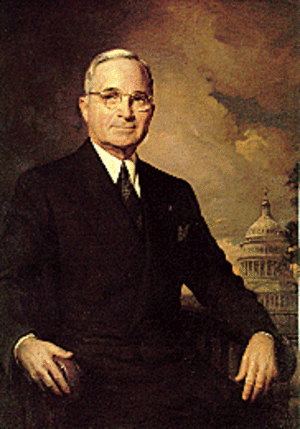Throughout American history Presidential succession has been a big topic, and there have been many changes to the order over the years. Should something happen to the President and the Vice President at the same time, who becomes President?
The order of Presidential succession we currently have originated in 1947, although there have been a few minor changes to the list:
- Vice President
- Speaker of the House
- President pro tempore of the Senate (the person who presides over the Senate if the Vice President is absent)
- Secretary of State
- Secretary of the Treasury
- Secretary of Defense
- Attorney General
- Secretary of the Interior
- Secretary of Agriculture
- Secretary of Commerce
- Secretary of Labor
- Secretary of Health and Human Services
- Secretary of Housing and Urban Development
- Secretary of Transportation
- Secretary of Energy
- Secretary of Education
- Secretary of Veterans Affairs
- Secretary of Homeland Security
Under this order, then, should something happen to both President Bush and President Cheney Nancy Pelosi, current Speaker of the House, would be next in line to fill the office of the Presidency. Following her would be Robert Byrd who is the President pro tempore in the Senate. From there it passes on to the members of the Presidents cabine.
This order was set into law by the Presidential Succession Act of 1947, signed by President Harry S. Truman. Truman himself had succeeded the office of the Presidency in 1945 when President Franklin Delano Roosevelt died at the beginning of his fourth term as President.
Little guidance on Presidential succession came from the Constitution in the early years of our country. It stated that the Vice President succeeded the President but nothing more. Congress recognized that this could lead to potentially disastrous situations, so they quickly went about deciding a longer order of succession.
In 1792 the first Presidential Succession Act was passed. It stated that the President would be succeeded by the Vice President, then by the President pro tempore of the Senate and lastly the Speaker of the House.
This order of succession lasted for almost a hundred years. Then, in 1886, the order was changed. Rather than the President pro tempore of the Senate and the Speaker of the House, the office of the Presidency would be filled by the members of the cabinet, in order of the creation of the office. We still follow this order for cabinet members in the order of Presidential succession today, with the Secretary of State coming first in line and the Secretary of Homeland Security coming last in line.
It was argued at the time that Senators and Congressmen were not strong executive leaders, but were elected for their abilities to serve in Congress. It was thought that cabinet officials would better be able to serve in an executive capacity.
When Truman succeeded to the office of the Presidency in 1945, he spearheaded the initiative to change the order of Presidential succession once more. Truman wanted the Speaker of the House to be next in line after the Vice President, followed by President pro Tempore of the Senate. He argued the Speaker was an elected official, not appointed by a cabinet member, and also that he had been chosen to lead the elected representatives of the United States of America. Some believe that he merely favored then Speaker of the House Sam Rayburn over then President pro tempore Kenneth McKellar.
The order of Presidential succession was especially important to Truman because he had no Vice President at the time. If something happened to him, he wanted his man to be next in line. The new Presidential Succession Act was passed in 1947, creating the basic order we have today.

